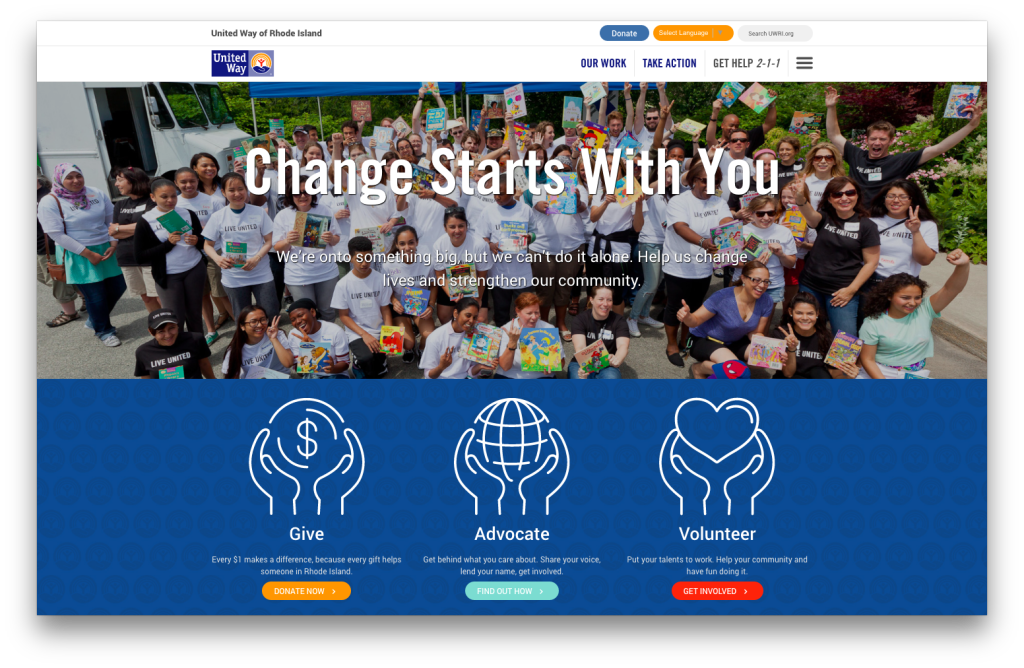How Nonprofits Can Use Digital Marketing to Get the Most Bang for Their Buck
Most nonprofit organizations share similar core goals like fundraising, engaging volunteers, and increasing cause awareness. However, these goals can be inhibited by the most difficult factor for nonprofits: a tight budget. Nonprofits are used to having to get the most bang for their buck when they hire employees and look for vendors; why not do the same for their digital marketing efforts?
We have 5 cost-effective digital marketing tips to help nonprofits of any size achieve goals without going over budget.
1. Define Goals, Audience, & Budget
This should be step one for any business, regardless of its status. A nonprofit organization should spend whatever time necessary to define its campaign goals, audience, and budget and how these relate to the overall business goals, audience, and budget. Also, it’s important to spend some time analyzing different kinds of ad campaigns and determining which of them aligns best with big picture goals.
Selecting the right ad campaign is crucial because it could be a costly miss. Focus money toward goals. If, for example, the goal is to build up email lists, then focus on lead generation. If the goal is to fundraise, focus on donations. Want to build brand awareness? Create a local awareness campaign for cheap. Ad selection has to be completed in coordination with goals, audience, and budget. Define these first, then select ads—and your organization will be well on its way.
2. Apply for Google Ad Grants and Set Up PPC Campaigns
Let’s not forget the goal of this endeavor: to save money. There is no cheaper way to advertise than to have someone else pay for it. And that is exactly what Google does.
Google will donate up to $10,000 per month to qualifying nonprofit organizations’ AdWords campaigns through its Google Ad Grants Program. The application process will take a few weeks, but it is well worth it. Selected nonprofits earn a consistent income source to fund AdWords campaigns.
Regardless of Google Ad Grants status, nonprofits should set up multiple PPC (pay-per-click) campaigns with AdWords, where users select ads that correspond with individual goals to promote the website, engage the public, etc. My advice is to run a bunch of A/B tests and remove the costlier and less effective ads until only the most cost effective ads remain.
3. Utilize Facebook
This should almost go without saying in 2016, yet here we are. Like Google, Facebook does its best to help out nonprofits. First and foremost, any nonprofit can apply for a “Donate Now” call-to-action button to place on its banner. This will give users the ability (either on desktop, mobile, or app) to donate to a cause easily through Facebook, providing an additional stream of income.
The other benefit of Facebook is access to cheap and targeted advertising. I’m of the opinion that Facebook ads are more effective than Google AdWords because the audience information is given voluntarily by the end-user, and not determined solely by an algorithm. When creating Facebook ads, follow the same rules for AdWords. Select ad type, audience, and content that best aligns with organizational goals and objectives. Then run multiple A/B tests to get the most cost-effective advertisement possible. One recommendation: If the goal is brand awareness, use a local awareness campaign because they cost tenths of a penny per impression, and are an easy way to get a message out to a specific community.

4. Use Email Marketing to Re-Engage your Audience
Collect email addresses at every opportunity. Add calls-to-action to the organization’s website and social media pages and sign up volunteers at events to build a strong contact list. Then, take time to engage with followers through a targeted email campaign.
Email marketing is fantastic because it helps reconnect with base followers and encourages them to attend events, fundraise, and much more. The best part is, it is remarkably simple to accomplish. Sign up for a tool such as MailChimp and send out regular blasts to followers with a few calls-to-action, updates on organizational happenings, some photos, and other engagement methods. Keep it simple and encourage everyone to forward the email to friends, too. An effective email campaign equals free advertising, and that’s the name of the game.
In the same light, an ambassador program for users who have donated a certain amount of money or time to the cause is extremely useful. Reward ambassadors with merchandise, exclusive offers, and advanced opportunities to sign up for events and activities. Ambassadors will help grow an organization organically through their networks, and help bring similarly-minded individuals into the fold.
5. Do the Research and Read the Analytics
Last, but certainly not least, do the research and read the analytics. It bears repeating! Too many organizations send out some campaigns and then rest on their laurels—don’t be one of them. Find out what is performing well, and what isn’t performing well. Test multiple variations of every campaign to find the secret sauce.
Use Google Analytics to measure how people are interacting with website calls-to-action by setting up Goal Conversions that align with organizational goals. Then, look at acquisitions of traffic and see how users are getting there. All this intensive review and analysis will help contribute to future content and hone messaging for peak effectiveness. Organizations that keep at it and establish a routine based in research and analysis will come out on top, and under budget.


